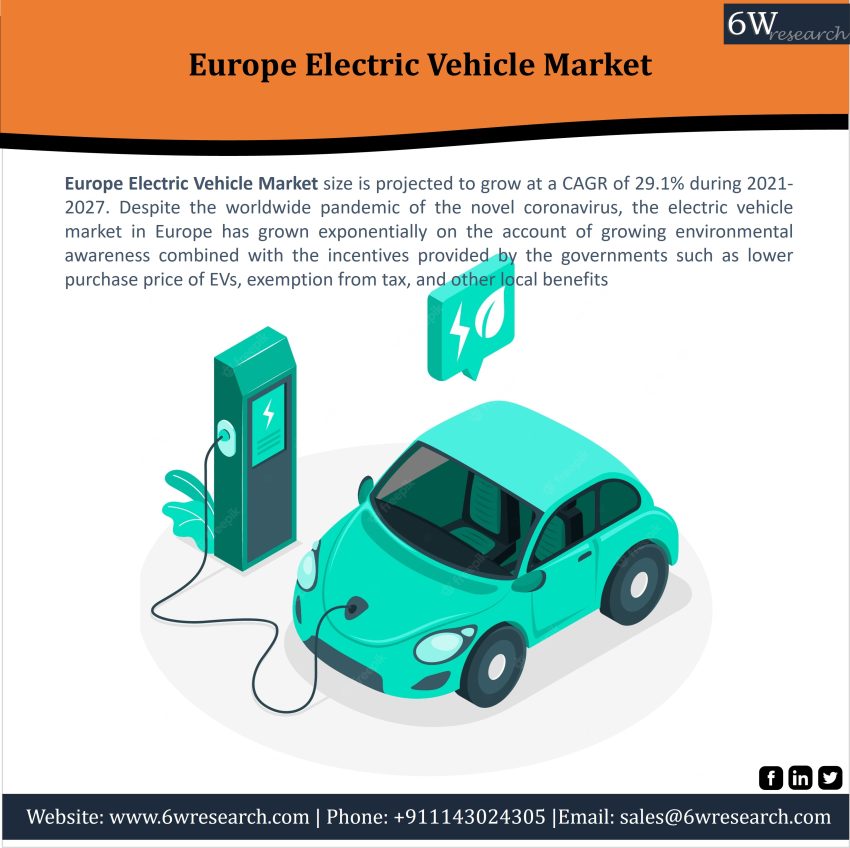Overview of the Europe Electric Vehicle Market
Electric vehicles are becoming increasingly popular in Europe as consumers look for more sustainable and environmentally-friendly transportation options. The Europe electric vehicle market is expected to grow significantly in the coming years, with sales of electric cars reaching XX million by 2025. This growth presents both challenges and opportunities for the Europe automotive industry.
One of the biggest challenges facing the Europe electric vehicle market is a lack of infrastructure. Electric cars require access to charging stations in order to refuel, and there are currently not enough charging stations available across Europe to support a large number of electric vehicles on the road. This lack of infrastructure could limit the growth of the electric vehicle market in Europe.
Another challenge facing the Europe electric vehicle market is the high cost of batteries. Electric car batteries are expensive, and this cost is often passed on to consumers in the form of higher prices for electric vehicles. However, battery prices are expected to decrease as technology improves and mass production increases.
Despite these challenges, there are also many opportunities for growth in the Europe electric vehicle market. One opportunity is increased demand from China, which is the world’s largest market for electric vehicles. Chinese companies are investing heavily in electric vehicle technology, and this investment is likely to result in increased demand for Europe-made electric vehicles.
Another opportunity for growth in the Europe electric vehicle market is government incentives. Several Europe countries offer subsidies or tax breaks to consumers who purchase electric vehicles, which makes them more affordable. These incentives could help
Challenges Facing the Europe Electric Vehicle Industry
The Europe electric vehicle industry is currently facing a number of challenges, including a lack of infrastructure, range anxiety, and high costs.
One of the biggest challenges facing the industry is a lack of infrastructure. There are currently very few charging stations in Europe, which makes it difficult for drivers to recharge their vehicles. This lack of infrastructure is one of the main reasons why many people are hesitant to switch to electric vehicles.
Range anxiety is another major challenge facing the industry. Electric vehicles have a limited range compared to traditional petrol or diesel cars, which means that drivers need to carefully plan their journeys. This can be a major inconvenience, and it can also lead to anxiety about being stranded if the vehicle runs out of charge.
Finally, electric vehicles are currently much more expensive than traditional petrol or diesel cars. This high cost is one of the main barriers to adoption for many consumers. However, prices are expected to fall as technology improves and production increases.
Factors Driving the Adoption of the Electric Vehicle Market in Europe
The Europe electric vehicle market size is expected to grow significantly in the coming years, driven by a number of factors. Firstly, increasing environmental concerns and awareness of the need for decarbonization are leading more and more consumers to consider electric vehicles as a more sustainable option. Secondly, government incentives and regulations are playing a role in promoting electric vehicle adoption, with a number of countries setting targets for EV sales and offering financial incentives to buyers. Finally, advances in technology are making electric vehicles more attractive to consumers, with longer ranges and faster charging times becoming increasingly common.
All of these factors are likely to continue to drive growth in the Europe electric vehicle market in the coming years, presenting significant opportunities for manufacturers and other stakeholders in the industry.
Opportunities for Growth and Development in the Europe Electric Vehicle Market
The electric vehicle market in Europe is expected to grow significantly in the coming years. This growth will be driven by a number of factors, including stricter emissions regulations, declining battery costs, and increasing consumer awareness of the benefits of electric vehicles.
There are a number of opportunities for companies to capitalize on this growing market. For example, there is a significant opportunity to develop new charging infrastructure to support the increasing number of electric vehicles on the road. There is also an opportunity to develop new technologies to improve the efficiency of electric vehicles, as well as to reduce their overall cost.
Finally, there is a largely untapped market for electric vehicles in Europe. In particular, there is significant potential for growth in the commercial vehicle segment, as many businesses are starting to recognize the benefits of electrification. With the right policies in place, Europe could become a world leader in the electric vehicle market.
Government Initiatives to Boost EV Sales in Europe
In recent years, the Europe Union has been working hard to promote the uptake of electric vehicles (EVs) across the continent. A major part of this effort has been the introduction of a number of government initiatives designed to boost EV sales.
One of the most important initiatives has been the launch of the Europe Green Cars Initiative (EGCI). The EGCI is a €XX billion investment fund that is being used to support research, development, and demonstration projects related to EVs. So far, over €XX million has been allocated to more than XX different projects.
Another key initiative is the Alternative Fuels Infrastructure Directive (AIFD), which requires Member States to put in place a comprehensive network of charging points for EVs by 2020. To date, over XXXX public charging points have been installed across Europe, with many more set to be added in the coming years.
The EU is also working on a number of other initiatives to support EV adoption, including measures to improve consumer awareness and confidence in EVs, as well as measures to reduce their costs. With continued government support, it is hoped that EVs will play a significant role in helping Europe meet its climate change goals in the years ahead.
Strategies for Successful Implementation of EVs in Europe
Electric vehicles (EVs) have been gaining market share in Europe over the last few years, but there are still many challenges to overcome before they can become mainstream. One of the biggest challenges is range anxiety or the fear that an EV will run out of power before reaching its destination. This can be addressed by increasing the availability of charging infrastructure and educating consumers about the realities of the EV range.
Another challenge is the high upfront cost of EVs, which can be offset by government incentives and positive public opinion. In order for EVs to reach mass market adoption, it is important that they are seen as desirable products. This can be achieved through effective marketing campaigns that highlight the benefits of EVs over traditional gasoline cars.
Finally, it is essential to ensure that EVs are produced in a way that is environmentally sustainable. This means using renewable energy to power manufacturing processes and using recycled materials wherever possible. With these strategies in place, Europe can lead the way in making electric vehicles a success story.
Conclusion of the Europe Electric Vehicle
In conclusion, the electric vehicle industry in Europe is facing a number of challenges, but there are also many opportunities for growth. Governments must take action to ensure that the necessary infrastructure is in place and that incentives are provided to support EV adoption. Automakers will need to continue innovating and investing in new technologies to improve EV performance and reduce costs so that more people can afford them. With the right policies and investments, Europe can become a leader in electric vehicles, setting an example for other markets around the world.

